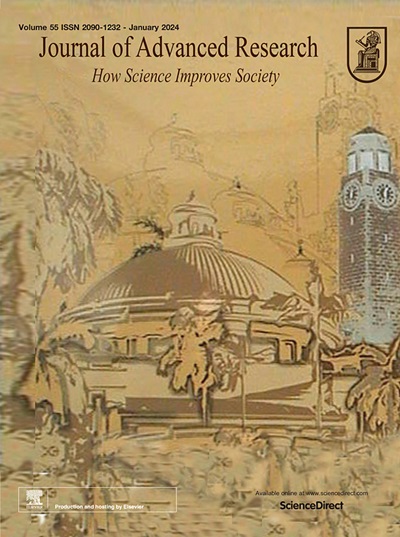Attention-augmented and depthwise separable convolutional message passing for robust fraud detection in large-scale graphs
IF 13
1区 综合性期刊
Q1 MULTIDISCIPLINARY SCIENCES
引用次数: 0
Abstract
Introduction
Graph Neural Networks (GNNs) have shown great promise in fraud detection tasks on graph-structured data. However, they struggle with challenges such as label imbalance and the presence of heterophilic neighbours, which can obscure fraudulent behaviour by embedding fraudsters among benign users.Objectives
Existing GNN-based models often address these issues by modifying the graph structure to favour homophily, frequently ignoring heterophilic neighbours during message passing. This approach weakens their capacity to detect fraud in real-world graphs. Addressing this gap is crucial to enhance the effectiveness of fraud detection in large-scale graph.Methods
This study proposes Attention-Augmented and Depthwise Separable Convolutional Message Passing (ADSCMP), a novel GNN framework. ADSCMP actively partitions neighbours into homophilic, heterophilic, and unknown groups during message passing. It integrates lightweight attention mechanisms to highlight critical nodes and employ depthwise separable convolutions to reduce computational overhead. Furthermore, this study dynamically generates root-specific weight matrices and incorporate both spectral and spatial features to better handle complex graph topologies.Results
This study evaluated ADSCMP on four benchmark datasets Amazon, YelpChi, T-Finance, and T-Social. In supervised experiments (40 % labelled data), ADSCMP achieved AUC scores of 97.91 %, 94.17 %, 97.51 %, and 99.75 %, respectively. Even with only 1 % labelled data in semi-supervised settings, the model maintained strong performance with AUCs of 93.15 %, 84.53 %, 94.92 %, and 98.59 %. Our ablation study confirmed that each model component contributed meaningfully to its overall performance. Additionally, ADSCMP reduced inference time compared to competitive baselines, making it suitable for real-time fraud detection.Conclusion
By actively learning from both homophilic and heterophilic neighbours and optimizing message passing with efficient convolutions and attention, ADSCMP enhances both the accuracy and scalability of fraud detection.

注意增强和深度可分卷积消息传递用于大规模图的鲁棒欺诈检测
图神经网络(gnn)在图结构数据的欺诈检测任务中显示出巨大的前景。然而,他们面临着标签不平衡和异性恋邻居的存在等挑战,这些挑战可能会通过在良性用户中嵌入欺诈者来掩盖欺诈行为。现有的基于gnn的模型通常通过修改图结构以支持同质性来解决这些问题,在消息传递过程中经常忽略异亲邻居。这种方法削弱了他们在现实世界的图表中检测欺诈的能力。解决这一差距对于提高大规模图中欺诈检测的有效性至关重要。方法提出了一种新的GNN框架——注意增强深度可分卷积消息传递(ADSCMP)。ADSCMP在消息传递过程中主动将邻居划分为同性恋、异性恋和未知组。它集成了轻量级的注意机制来突出关键节点,并采用深度可分离卷积来减少计算开销。此外,该研究动态生成根特定权重矩阵,并结合谱特征和空间特征,以更好地处理复杂的图拓扑。结果本研究在Amazon、YelpChi、T-Finance和T-Social四个基准数据集上对ADSCMP进行了评估。在监督实验(40% %标记数据)中,ADSCMP的AUC得分分别为97.91 %、94.17 %、97.51 %和99.75 %。即使在半监督设置中只有1 %的标记数据,该模型也保持了良好的性能,auc分别为93.15 %、84.53 %、94.92 %和98.59 %。我们的消融研究证实了每个模型组件对其整体性能有意义的贡献。此外,与竞争基准相比,ADSCMP减少了推理时间,使其适合实时欺诈检测。结论ADSCMP通过主动向同性和异性邻居学习,利用高效的卷积和关注优化消息传递,提高了欺诈检测的准确性和可扩展性。
本文章由计算机程序翻译,如有差异,请以英文原文为准。
求助全文
约1分钟内获得全文
求助全文
来源期刊

Journal of Advanced Research
Multidisciplinary-Multidisciplinary
CiteScore
21.60
自引率
0.90%
发文量
280
审稿时长
12 weeks
期刊介绍:
Journal of Advanced Research (J. Adv. Res.) is an applied/natural sciences, peer-reviewed journal that focuses on interdisciplinary research. The journal aims to contribute to applied research and knowledge worldwide through the publication of original and high-quality research articles in the fields of Medicine, Pharmaceutical Sciences, Dentistry, Physical Therapy, Veterinary Medicine, and Basic and Biological Sciences.
The following abstracting and indexing services cover the Journal of Advanced Research: PubMed/Medline, Essential Science Indicators, Web of Science, Scopus, PubMed Central, PubMed, Science Citation Index Expanded, Directory of Open Access Journals (DOAJ), and INSPEC.
 求助内容:
求助内容: 应助结果提醒方式:
应助结果提醒方式:


